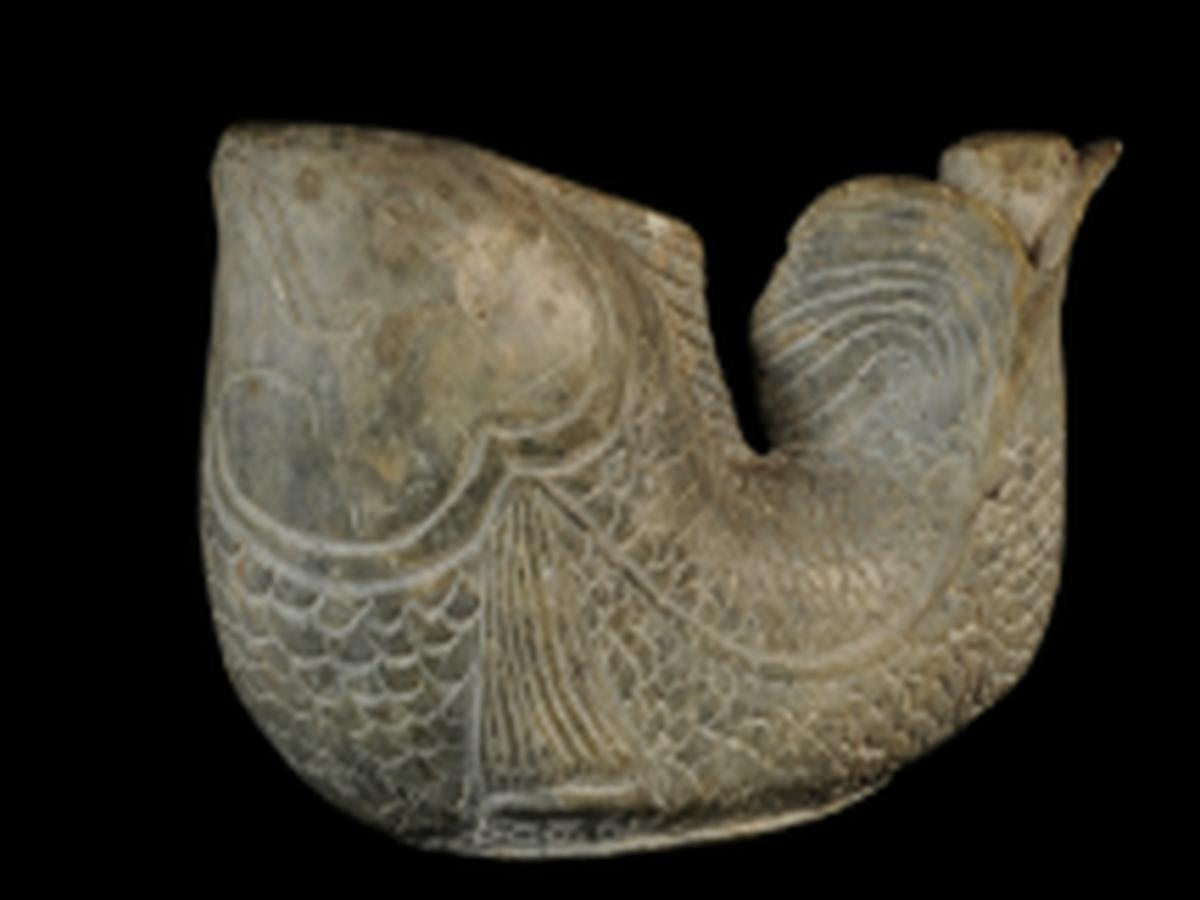State
Tribe Name
Art Type
short description
This is by the Santal tribe of Odisha, and it is a peshtak making by the Santal tribe of Odisha. In addition to being a traditional item of craft, it also accompanies the community. The rich contributions of the Santals traditional art forms are for their creativity. This is an example of careful crafting in stone. This goes with a people's affinity with nature in the artistry of carving. Fish motifs are consummate in Santal arts because they do symbolize life, fertility, and, of course, water, partaking in agricultural practices and daily life. Engravings adorn the designs on the body in the paperweight. Fins, scales, and other parts figure in these engravings. All that comes to completing the application to make the fish lifelike is the addition of texture and dimension. The fins, carefully carved on the sides and top of the fish, contribute in portraying the realistic motion of the fish. The scales have been engraved on the paperweight to increase its tactile quality, thus denoting the craftsmanship and attention to detail expected of Santal artisans.
Thumbnail

Filter Postion
Right
Filter Background
Off
Theme
Filter Header Image

content
Image

description
This is by the Santal tribe of Odisha, and it is a peshtak making by the Santal tribe of Odisha. In addition to being a traditional item of craft, it also accompanies the community. The rich contributions of the Santals traditional art forms are for their creativity. This is an example of careful crafting in stone. This goes with a people's affinity with nature in the artistry of carving. Fish motifs are consummate in Santal arts because they do symbolize life, fertility, and, of course, water, partaking in agricultural practices and daily life. Engravings adorn the designs on the body in the paperweight. Fins, scales, and other parts figure in these engravings. All that comes to completing the application to make the fish lifelike is the addition of texture and dimension. The fins, carefully carved on the sides and top of the fish, contribute in portraying the realistic motion of the fish. The scales have been engraved on the paperweight to increase its tactile quality, thus denoting the craftsmanship and attention to detail expected of Santal artisans.
This specific paperweight is designed flat from the bottom for stability and also permits its function of holding papers down. It slightly curves at the end, thereby emulating some of the physical features a fish typically has, thus enhancing its value. Even while functional, this paperweight also yields art from the Santal tribe in that it makes pleasing things from simple materials. It is a matter of functionality, but again it has been an object of creativity in its execution in art, decoding symbolically the use of forms. Not merely, this paperweight is a thing for use; it also holds rich cultural traditions of that tribe, that is, the Santal tribe of Odisha.
This specific paperweight is designed flat from the bottom for stability and also permits its function of holding papers down. It slightly curves at the end, thereby emulating some of the physical features a fish typically has, thus enhancing its value. Even while functional, this paperweight also yields art from the Santal tribe in that it makes pleasing things from simple materials. It is a matter of functionality, but again it has been an object of creativity in its execution in art, decoding symbolically the use of forms. Not merely, this paperweight is a thing for use; it also holds rich cultural traditions of that tribe, that is, the Santal tribe of Odisha.
Image Mode
landscape
promoted
On
Verified
Off
